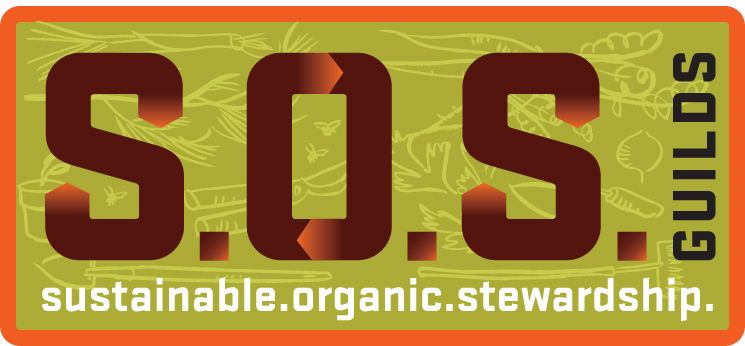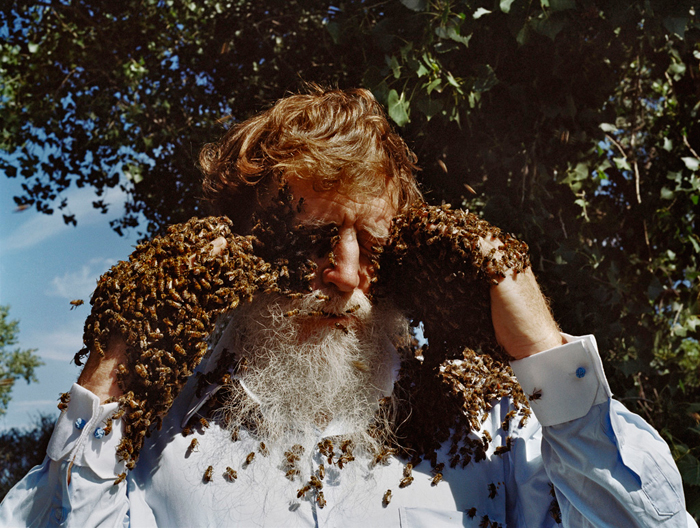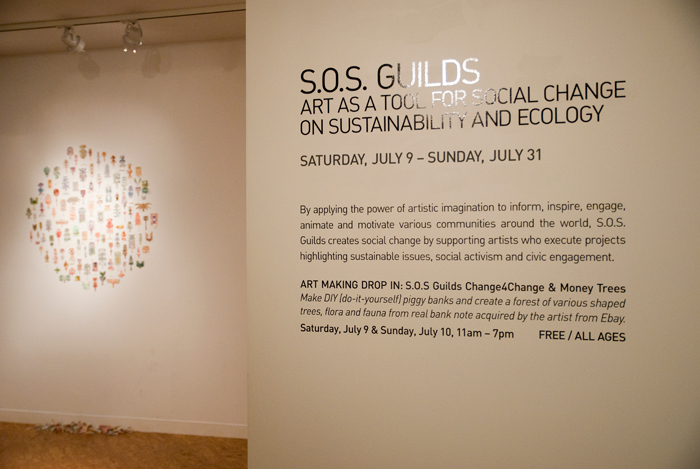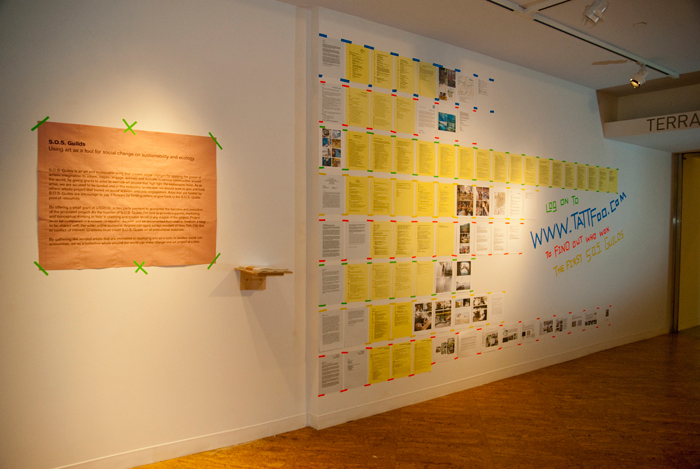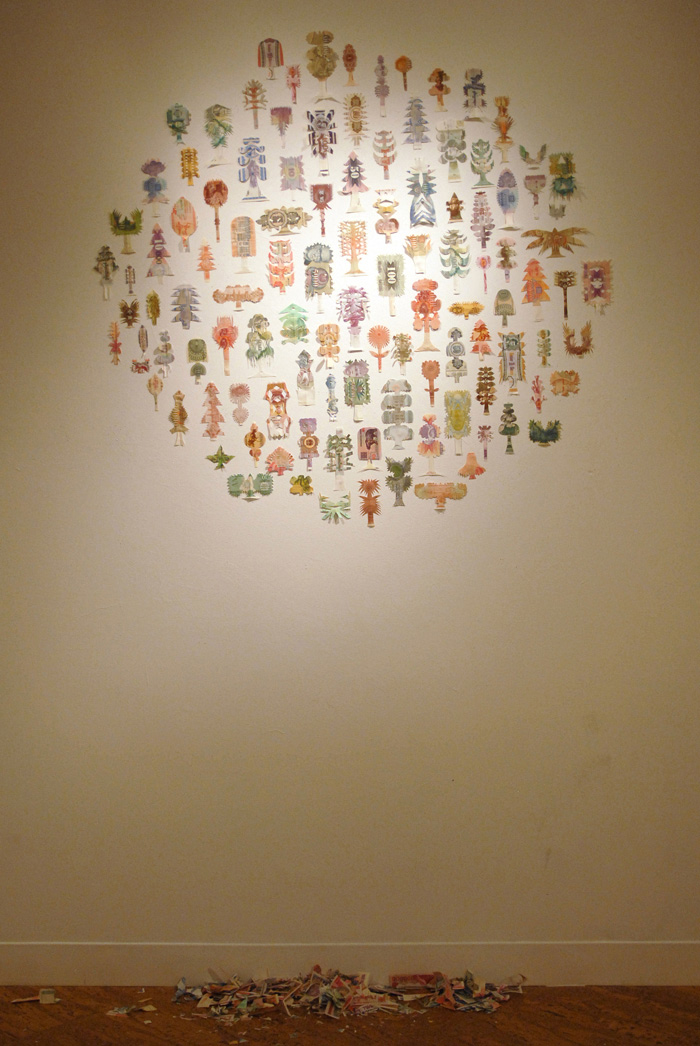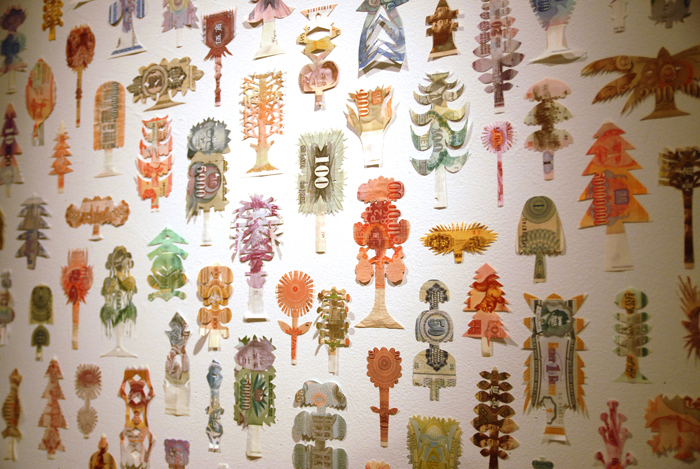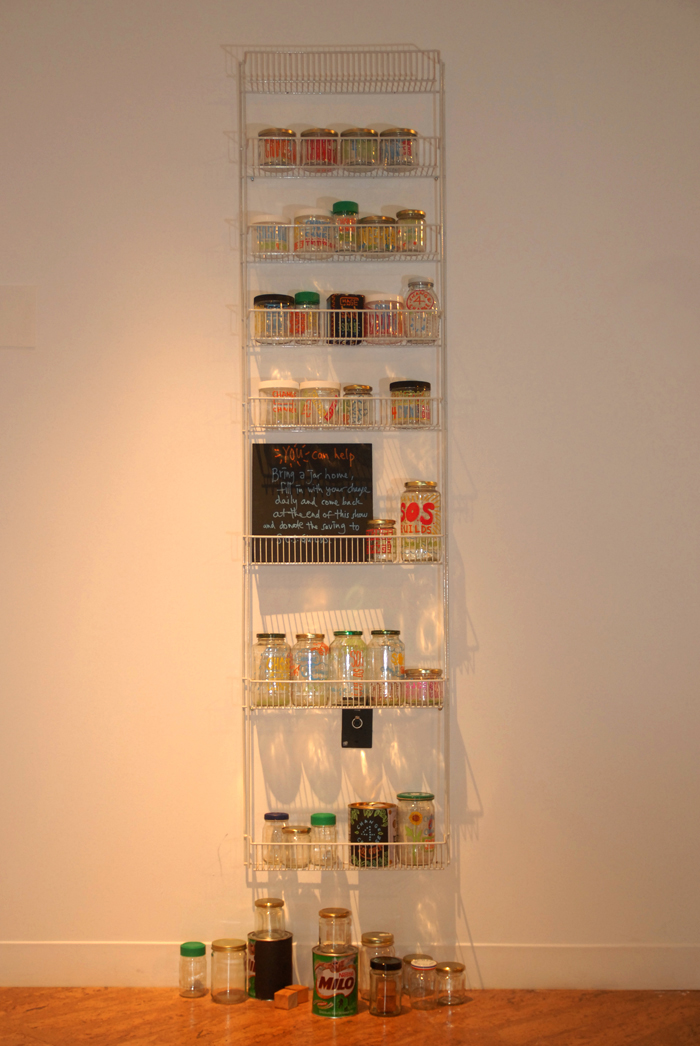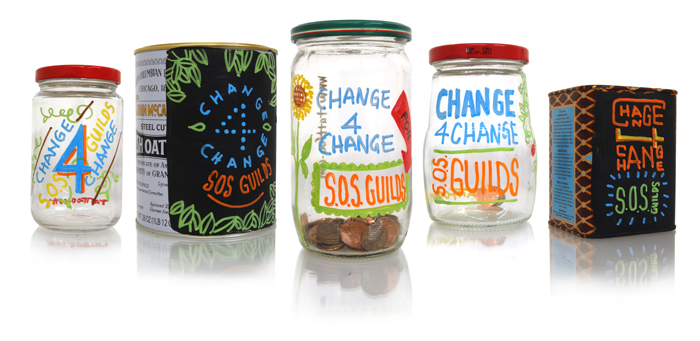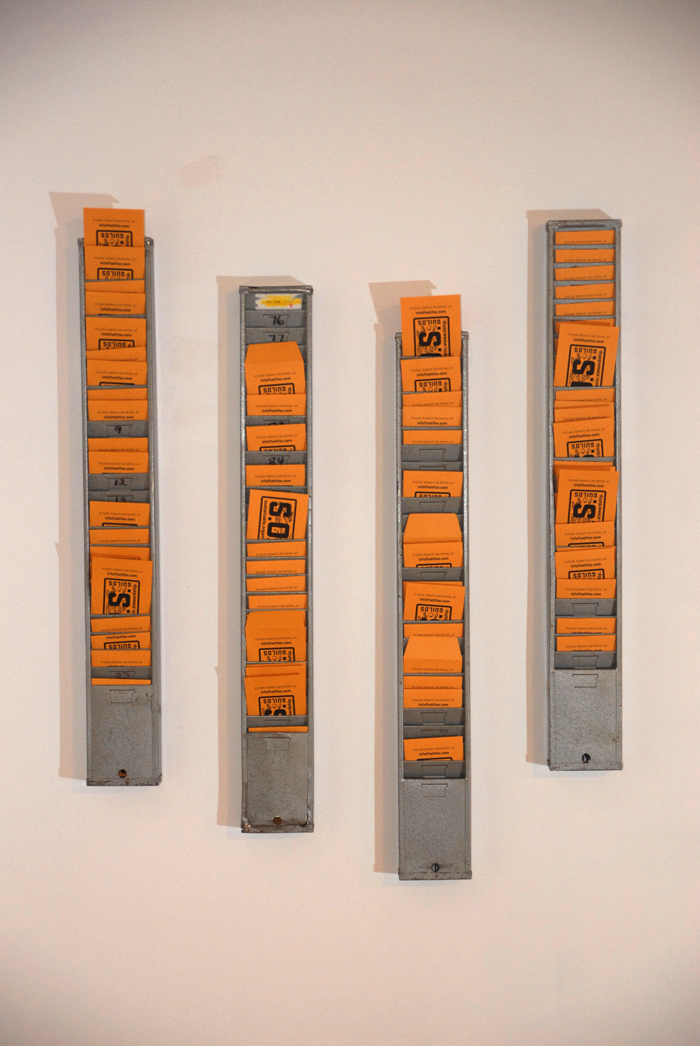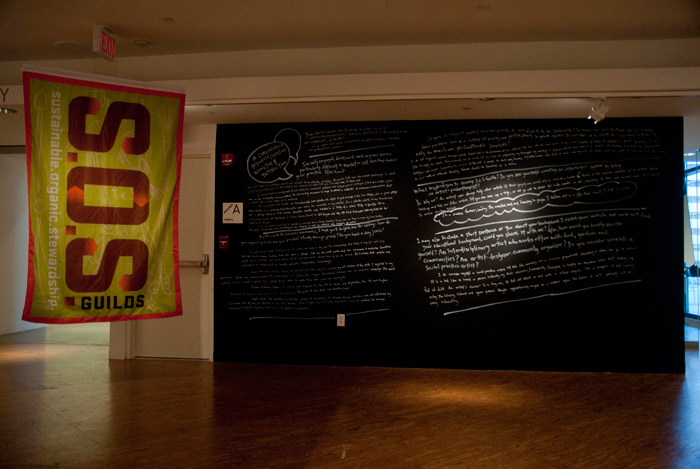Using art as a tool for social change on sustainability and ecology.
#sosGuilds is an art and sustainable entity that creates social changes by applying the power of artistic imagination to inform, inspire, engage, animate and motivate in various communities around the world, by giving grants to artist to execute art project that high light the sustainable issue. As an artist, we are so used to be funded and in this economic landscape, we should seek to give and fund others artistic project that based on social activism and civic engagement. Artist that are funded by S.O.S. Guilds are encourage to pay it forward by funding others or give back to the S.O.S. Guilds pool of resources. By offering a small grant of USD500, in two parts payment to guarantee the success and execution of the proposed project. As the founder of S.O.S. Guilds, I'm here to provide supports, marketing, and conceptual thinking to help in planning and trouble shoot in any stages of the project. Project must be completed in a season (3 months) duration and be documented from start to finish on a blog to be shared with the wider online audience. Anyone can apply except resident of New York City due to conflict of interest. Grantees must credit S.O.S. Guilds on all promotional materials. By gathering like minded artists that are interested in deploying arts as a tools to awakes social consciousness, we as a collective whole around the world can make change one art project at a time.
Applicants CHECKLIST: CURRENT RESUME REFERENCES Email your proposal to sosguilds(at)tattfoo(dot)com
Doners SOME IDEAS BELOW HOW YOU CAN HELP: TREASURE IN PLAIN SIGHT BIRTHDAY GIFT for a CAUSE.
Round ONE: Deadline: April 1, 2011 Selection panelist was Follow her progress on http://hollylynton.wordpress.com/
Press:
Change4Change and Money Trees Change 4 Change is the fund raising program for S.O.S. Guilds, the upcycle of waste address the key concept of resilience of the materials for another life as a piggy bank and the resilience of artists finding alternative funding. The gallery space is used as a platform to start the grass root fund raising effort. Asking the visitors to take home a glass jar / tin can that have a slit on the top to save up their daily change in their pocket for the duration of the show and bring back the DIY piggy bank at the end of the exhibition. Artist wll be actively making the slit on the cap of the jar by hand using a nail and hammer. Visitors are invited to join in this activity and help out in producing these visually interesting piggy bank for others to take home too. Hopefully this old fashion way of frugality will permeate the way we live our life, that every cents counts and realized that everyone have the power to fund other artists or project that they are passionate about. Conceptually saving plant seeds and saving seeds money are mirroring each other in how economy plays a vital role in our food system and art world. S.O.S. Guilds is planting creative seed, hoping to grow into a tree and bear fruits. Visually this idea is represented by a forest of various shape trees, flora and fauna that is made from from real bank note that is acquired by the artist from Ebay. Participants are encourage to help and add on to the wall.
A conversation between Christine Wong Yap and Tattfoo Tan Your work seems like it always involves social/community engagement... Did you start out as an artist, or as an organizer, or both? I’m an artist that engage communities in my project using various intervention and participation scenario.
Socially engaged, direct work such as yours seems particularly difficult to market or sell. Does that impact your practice. If so, how? The work that I’m working on now is not meant to be a valuable art object. I do not work on consignment of art objects to commercial galleries but instead work on commission. I think it is a better system and a more ecologically conscious method. I’m not wasting resources in hope to attract a collector. A commission makes certain that an artwork has a home after it is realized. All my projects and concepts are transformable into valuable art object. A good example is the S.O.S. Pledge, it is a green pledge that exists as a postcard that the public signs and is also available as an online petition on my website. For a valuable object, it was transformed into a pledge etched on white Carrara Venatino marble and installed in a lobby of a school PS971 in Brooklyn. It was commissioned by the NYC Department of Cultural Affairs Percent for Art Program and the NYC School Construction Authority Public Art for Public Schools Program. I’m now seeking sponsorship to upgrade my worm box from a found traveling trunk into one that is made by Louis Vuitton. By using a luxury item and contrasting it with compost, I seek to redefine the meaning of value.
As this article concerns economics, I hope you'll forgive me for asking: how do you support yourself and your practice? Mostly through grants? Do you have a day job(s)? I used to think artist should be 100% an artist and not having a day job. I’m reconsidering that belief. A day job not only provides much needed income but also allows a glimpse into how the world works and how commerce is conducted. Sometimes artists live in a bubble. Art schools teach you about art but never about how to be an artist. It is crucial that artists are perceived as an integral part of society and are compensated accordingly. Some artists are actually inspired by and learn from their day job. Currently, my art utilizes all the skills I acquired in my design, branding and advertising projects. My green project, S.O.S. (Sustainable. Organic. Stewardship.) behaves like an awareness campaign. The merit patches on my coverall requires my graphic design skills to make them look good and meaningful. Nature Matching System, a colorful grid inspired by the color on the skin of fruits and vegetables has it’s own tagline “Remember to take your daily dose of colors” to encourage the public to eat fresh and healthy food. Simple tasks like updating my website, sending out newsletters to announce my new exhibition are all influenced by my design skill. My day job did help in my art practice. Since a year ago, I’m solely dependant on my art practice. It includes: workshops, consultations, teaching, commissions and speaking engagements.
If you do support yourself through grants, do you find it to be sustainable? So many non-profits that rely on grants have problems such as a culture of scarcity and getting stuck in grant cycles. Do you feel like it is viable for individual artists to rely so much on philanthropic sources? I do not support myself through grants. Grants help in the production of an artwork but are not the main source of my income. Grants do helps to validate a project.
What inspired you to develop SOS Guilds? Do you see yourself creating an alternative system by being an artist-philanthropist?
I may also include a short sentence or two about your background. I visited your site but could not find your educational background, could you share it with me? Also, how would you briefly describe yourself? An interdisciplinary artist who works often with food, gardens and communities? An artist-designer-community organizer? Do you consider yourself a social practice artist? Let me know. I do consider myself a social practice artist. It feels like nowadays one is instantly pigeonholed depending on where you went to school. It is a bad idea to brand a person instantly by their education/university. Everyone is buying an education label but ending up full of debt. An artist’s career is a long one, it did not start or end with a college degree. I’m a champion of self-learning, using the library, internet and your peers. Maybe apprenticeship might be a better option. The future of art pedagogy will be very interesting.
|
